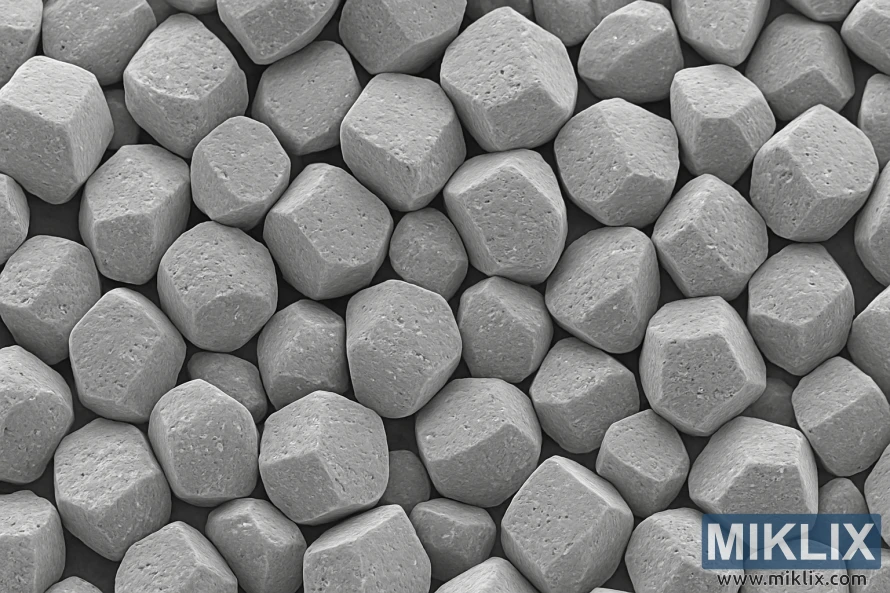Image: Corn Starch Granules Micrograph
Published: July 22, 2025 at 7:06:23 AM UTC
Last updated: September 27, 2025 at 5:17:54 PM UTC
High-resolution SEM image of corn starch granules with polygonal shapes and pitted surfaces on white background, highlighting scientific detail for brewing.
In this strikingly detailed micrograph, the viewer is drawn into the microscopic world of corn starch granules, rendered with exceptional clarity and precision. Captured using a scanning electron microscope, the image reveals a densely packed array of polyhedral particles, each one distinct yet harmoniously arranged. The granules dominate the frame, their sharp edges and multifaceted surfaces forming a crystalline landscape that feels both organic and engineered. The lighting is bright and evenly distributed, casting minimal shadows and allowing the full texture and geometry of each granule to emerge with remarkable definition.
The granules vary subtly in size and shape, though most conform to a consistent polyhedral structure—likely dodecahedral or similar multi-faceted forms. Their surfaces are pitted and slightly rough, suggesting a natural complexity that belies their uniformity. This texture is not merely aesthetic; it reflects the internal architecture of the starch molecules, which play a critical role in their behavior during processes like gelatinization, enzymatic breakdown, and fermentation. The image’s high resolution allows for close inspection of these features, making it an invaluable visual reference for scientists, brewers, and food technologists alike.
Set against a pure white background, the granules stand out in stark relief, their gray tones and intricate contours emphasized by the absence of visual noise. This minimalist backdrop enhances the sense of focus and control, reinforcing the image’s scientific intent. It’s not just a photograph—it’s a study, a snapshot of molecular architecture that invites analysis and interpretation. The composition is tight and immersive, filling the frame entirely with the granules and creating a sense of scale that feels both intimate and expansive.
In the context of beer brewing, this image takes on added significance. Corn starch, often used as an adjunct in brewing, contributes fermentable sugars that lighten the body and flavor of the final product. Understanding the granule structure at this level allows brewers to optimize mash conditions, enzyme activity, and starch conversion rates. The granules’ shape and surface area influence how quickly and efficiently they break down during the brewing process, affecting everything from alcohol yield to mouthfeel. This micrograph, then, is not just a technical marvel—it’s a window into the foundational chemistry of brewing.
The overall mood of the image is one of precision and curiosity. It invites the viewer to consider the hidden complexity of everyday ingredients, to appreciate the elegance of natural structures that operate at scales beyond human perception. The granules, though microscopic, are monumental in their importance, shaping the texture, flavor, and efficiency of countless food and beverage applications. Through this lens, corn starch is transformed from a humble carbohydrate into a subject of scientific wonder—a material whose beauty lies in its geometry, its function, and its quiet ubiquity.
This image stands as a testament to the power of magnification, of seeing the unseen and uncovering the patterns that govern our material world. It bridges the gap between biology and industry, between the field and the fermenter, offering a glimpse into the molecular choreography that underpins the art of brewing.
The image is related to: Using Maize (Corn) as an Adjunct in Beer Brewing

